+39 0669887260 | info@wucwo.org | Contact us
Art for meditation - May 2024
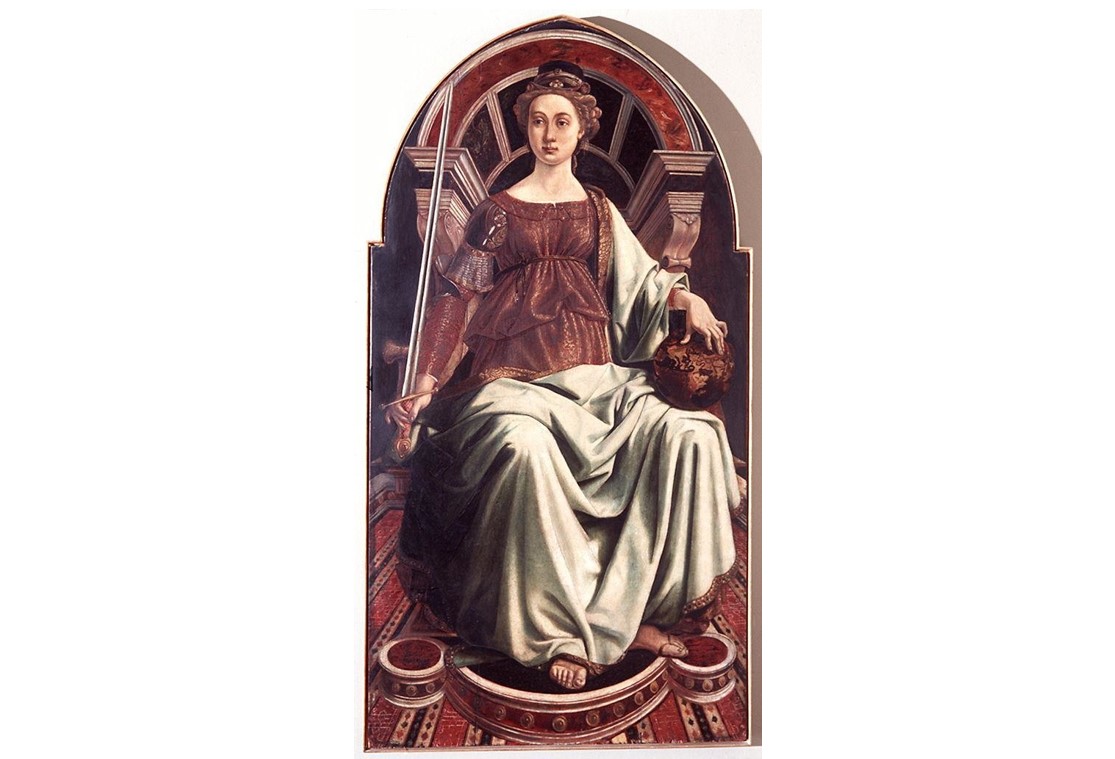
Piero del Pollaiolo (Florence 1441 - Rome 1496), Justice, 1469-72, tempera grassa on panel, 168 x 90.5 cm, Florence, Museo degli Uffizi
The Virtues: Justice.
Last April, Pope Francis - who has dedicated all of this year's general audiences to the vices and virtues - spoke about the second of the 'cardinal' virtues, Justice, in his Wednesday 3 April audience.
He began his catechesis by saying that justice ‘is the social virtue par excellence. The Catechism of the Catholic Church defines it thus: “The moral virtue that consists in the constant and firm will to give their due to God and neighbor” (no. 1807). This is justice. Often, when justice is mentioned, the motto that represents it is also quoted: 'unicuique suum', that is, “may all get their due”. It is the virtue of law, which seeks to regulate relations between people with equity'.
Art for meditation - April 2024
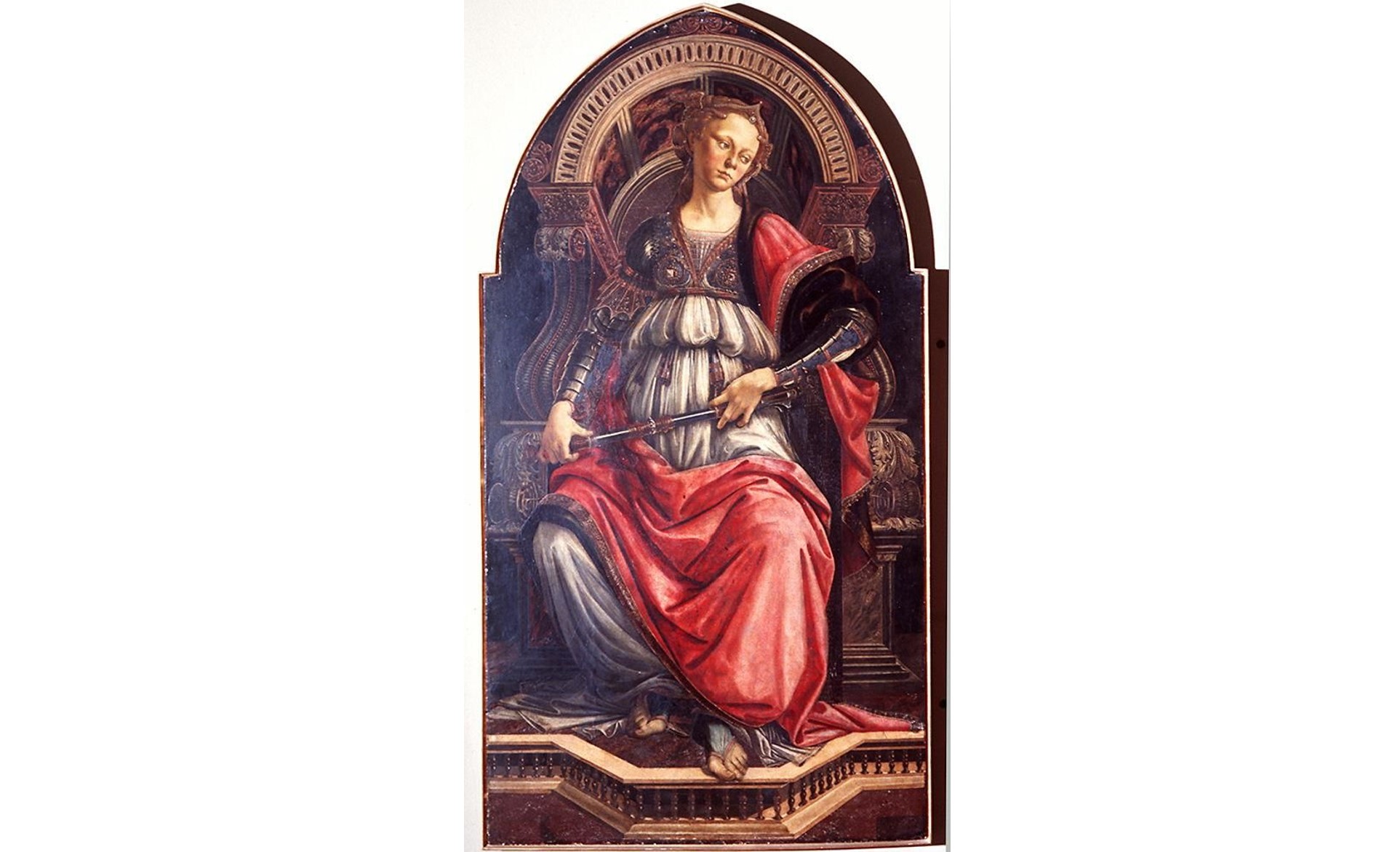
Sandro Botticelli (Florence 1445 - 1510), The Fortitude, 1470, tempera grassa on panel, 167 x 87 cm, Florence, Uffizi Museum
The Virtues: The Fortitude.
With the month of April, our journey of discovery of the virtues takes a step forward and we enter the first of the so-called 'cardinal' virtues, namely the Fortitude. If we open the Catechism of the Catholic Church, it tells us that " Human virtues are firm attitudes, stable dispositions, habitual perfections of intellect and will that govern our actions, order our passions, and guide our conduct according to reason and faith. They make possible ease, self-mastery, and joy in leading a morally good life. the virtuous man is he who freely practices the good. The moral virtues are acquired by human effort. They are the fruit and seed of morally good acts; they dispose all the powers of the human being for communion with divine love. " (No. 1804).
Art for meditation - March 2024
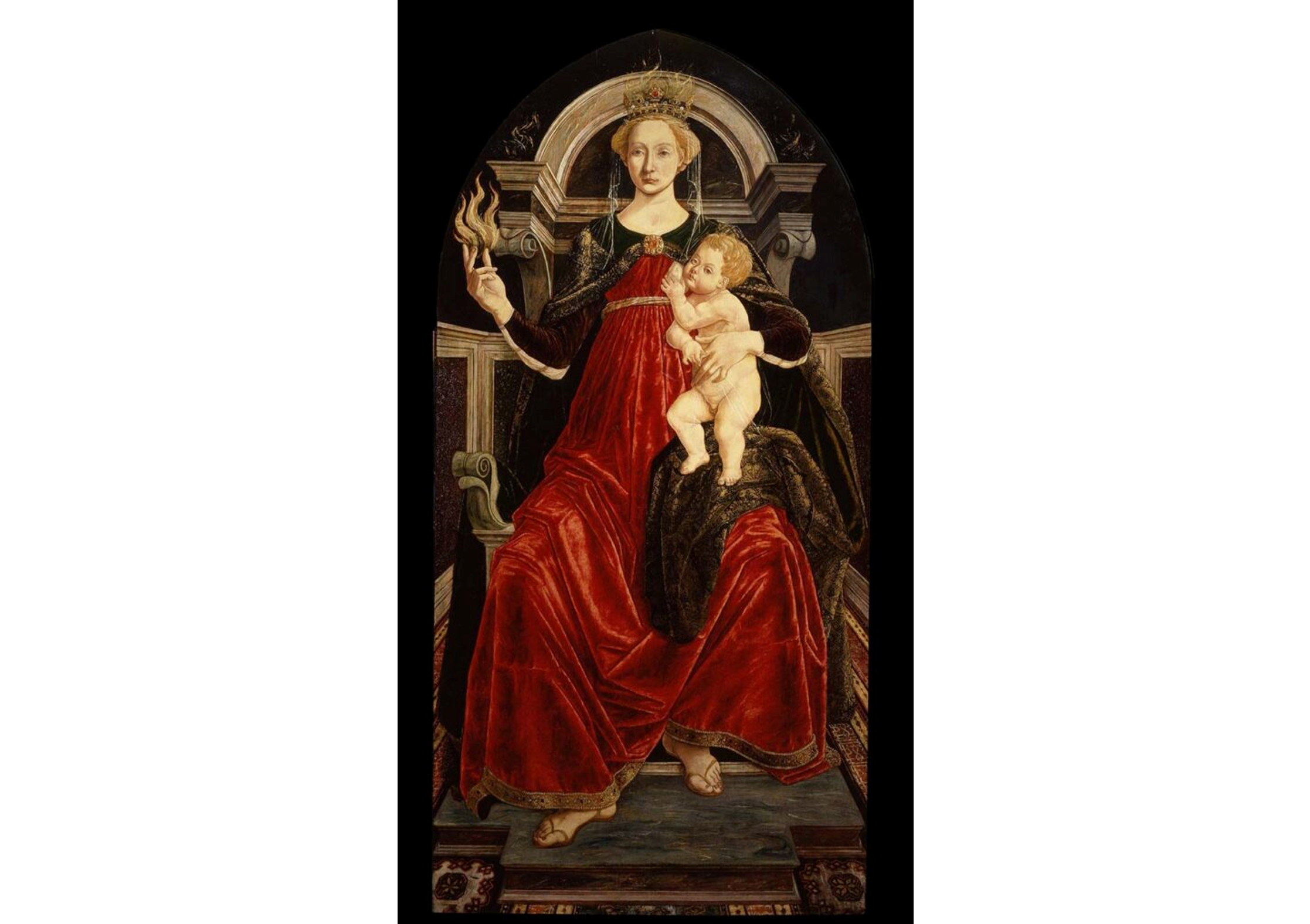
Piero del Pollaiolo (Florence 1441 - Rome 1496), Charity, 1469-70, tempera grassa on panel, 168 x 90.5 cm, Florence, Uffizi Museum
The Virtues: Charity
This month, leading up to Easter, we examine the third of the theological virtues, Charity. Art historians tell us that this was in fact the first panel of the cycle of virtues painted by Piero del Pollaiolo and that it was presented to the heads of the Tribunale della Mercanzia in order to obtain the work: the proclamation in fact foresaw the execution of seven panels to represent all the virtues, both the "theological" and the "cardinal" ones. The work was liked and so the painter was contracted to execute the other works as well.
Art for meditation - February 2024
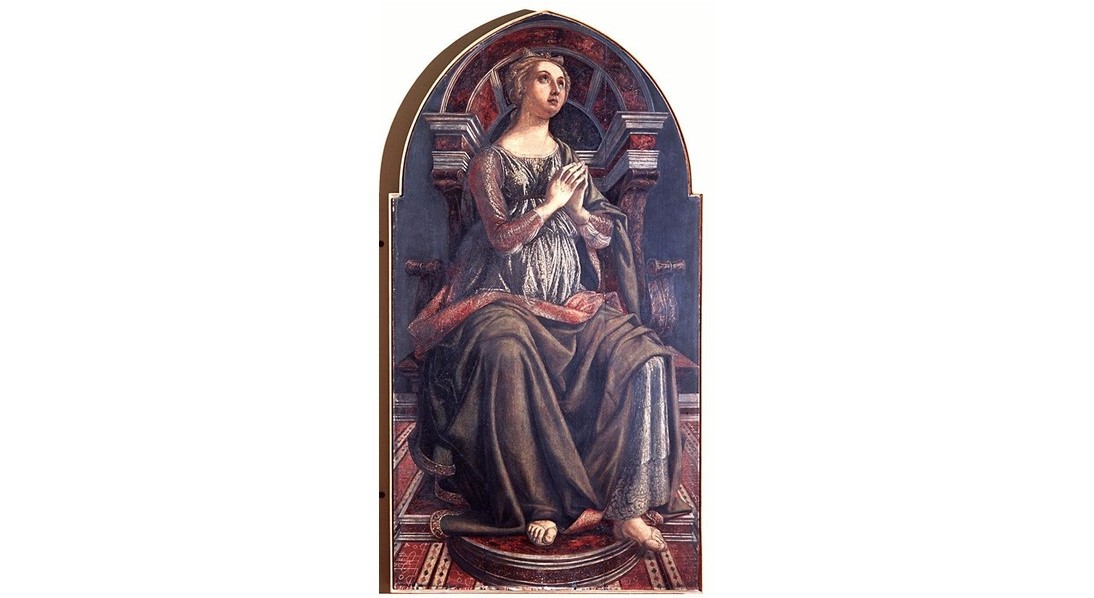
Piero del Pollaiolo (Florence 1441 - Rome 1496), La Speranza, 1469-72, tempera grassa on panel, 168 x 90.5 cm, Florence, Uffizi Museum
The virtues: Hope
We continue to examine the pictorial cycle dedicated to the Virtues that was commissioned to Piero del Pollaiolo in 1469 and destined for the Audience Room in the Tribunale di Mercanzia in Piazza della Signoria in Florence.
Before examining the second painting in the cycle, let us recall what we mean when we speak of the "theological" virtues (faith, which we wrote about last month, hope and then charity). In the Catechism of the Catholic Church we read: “the theological virtues relate directly to God. They dispose Christians to live in a relationship with the Holy Trinity. They have the One and Triune God for their origin, motive, and object. The theological virtues are the foundation of Christian moral activity; they animate it and give it its special character. They inform and give life to all the moral virtues. They are infused by God into the souls of the faithful to make them capable of acting as his children and of meriting eternal life. They are the pledge of the presence and action of the Holy Spirit in the faculties of the human being. There are three theological virtues: faith, hope, and charity”. (Nº 1812-1813).
Art for meditation - January 2024
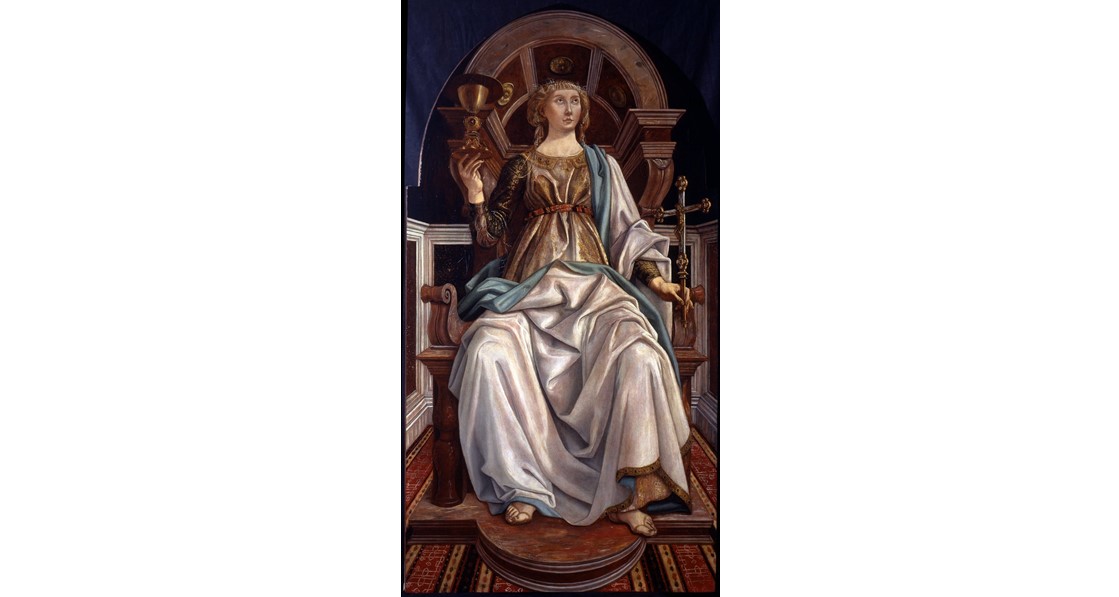
Piero del Pollaiolo (Florence 1441 - Rome 1496), The Faith, 1470, tempera grassa on panel, 168 x 90.5 cm, Florence, Uffizi Museum
The Virtues: Faith
In this New Year, we would like to offer for reflection and contemplation figures of women that we can certainly define as "special": these are the personifications that artists of the past have made in an attempt to represent the virtues. They are always depicted as women as if to emphasise the indissoluble link between the 'habitual and firm disposition to do the good' (definition of virtue found in the Catechism of the Catholic Church 1803) and the female gender.
This first work, depicting Faith, is part of a cycle of paintings dedicated to the Virtues, commissioned to Piero del Pollaiolo in 1469 and destined for the Sala dell'Udienza of the Tribunale di Mercanzia (the body that heard the commercial disputes of Florentine merchants and administered justice among the members of the arts & crafts) in Piazza della Signoria in Florence.
Art for meditation - December 2023
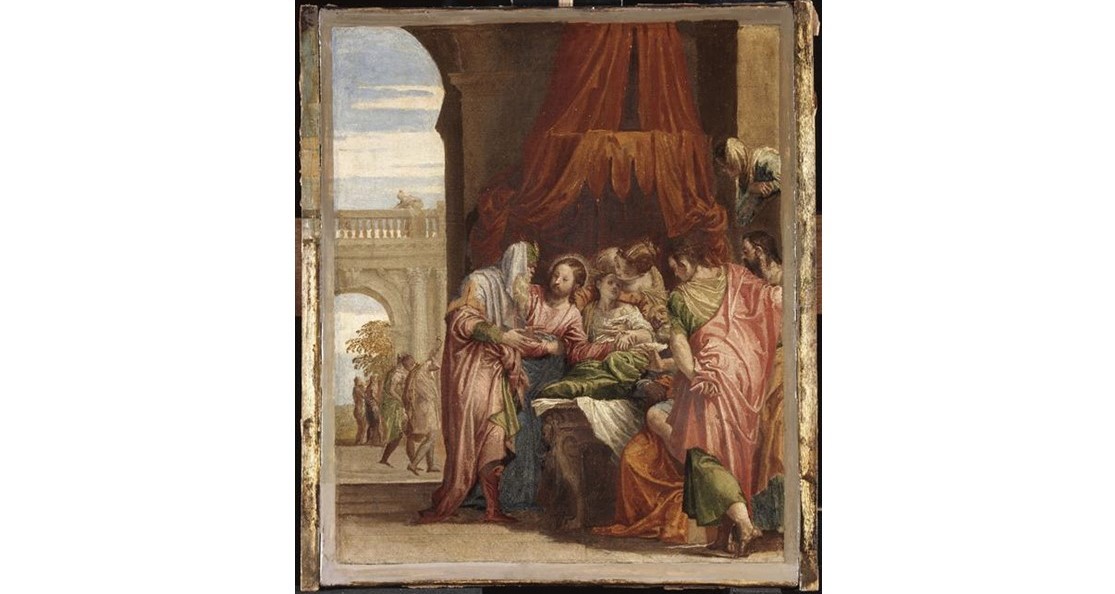
© 2014 RMN-Grand Palais (musée du Louvre) / Tony Querrec
Veronese, Paolo Caliari called (Verona 1528 - Venice 1588), The Resurrection of the Daughter of Jairus, c. 1546, oil on paper pasted on canvas, 42 x 37 cm, Paris, Musée du Louvre
Women of the New Testament: The Daughter of Jairus.
When Jesus returned, the crowd welcomed him, for they were all waiting for him. And a man named Jairus, an official of the synagogue, came forward. He fell at the feet of Jesus and begged him to come to his house, because he had an only daughter, about twelve years old, and she was dying. As he went, the crowds almost crushed him. And a woman afflicted with hemorrhages for twelve years, who (had spent her whole livelihood on doctors and) was unable to be cured by anyone, came up behind him and touched the tassel on his cloak. Immediately her bleeding stopped.
Art for Meditation - November 2023
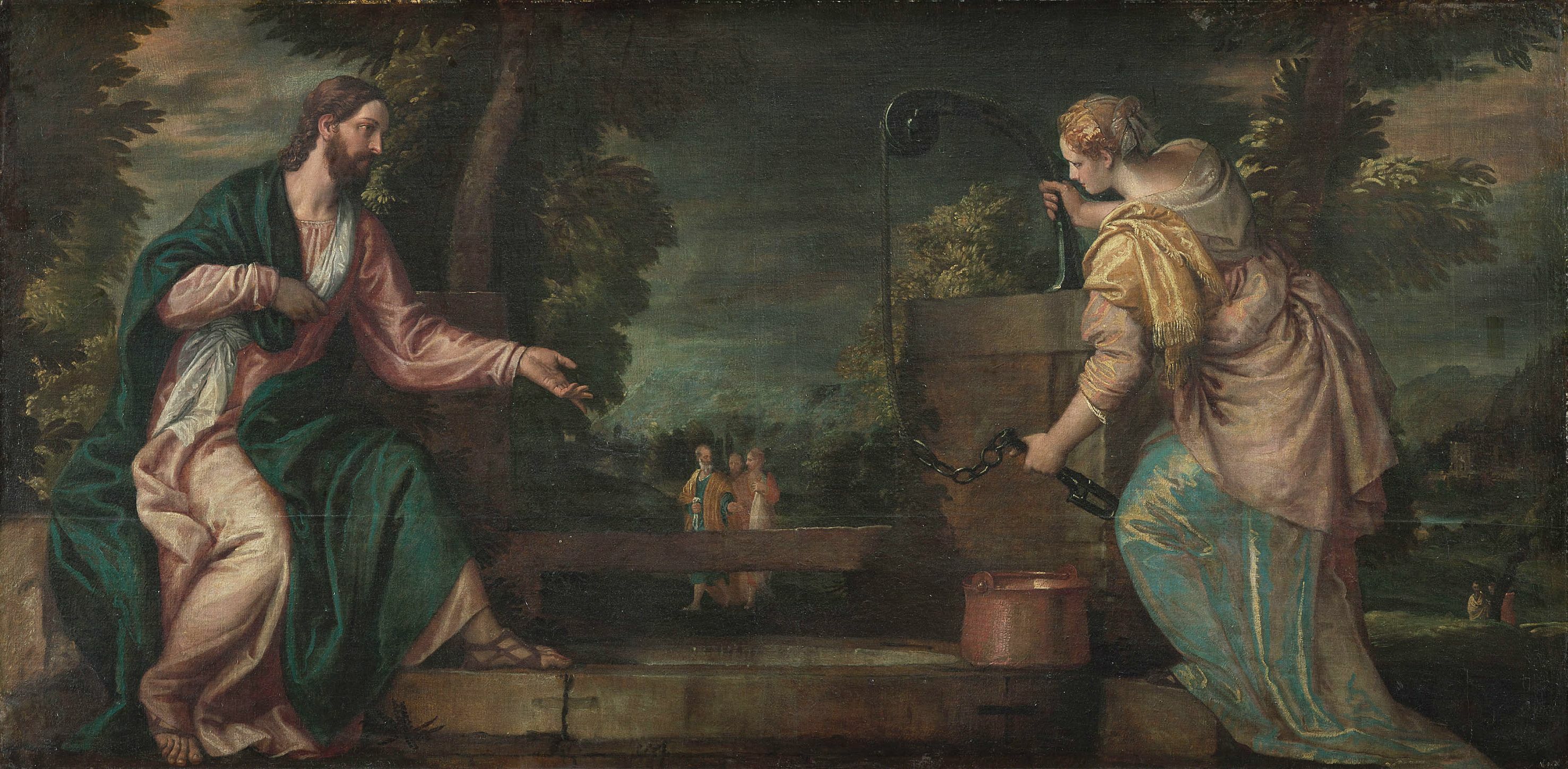 Veronese, Paolo Caliari said the (Verona 1528 - Venice 1588), Christ and the Samaritan, about 1585, oil on canvas, 143.5 x 288.3 cm, Vienna, Kunsthistorisches Museum
Veronese, Paolo Caliari said the (Verona 1528 - Venice 1588), Christ and the Samaritan, about 1585, oil on canvas, 143.5 x 288.3 cm, Vienna, Kunsthistorisches Museum
Month of November.
Women of the New Testament: the Samaritan.
He had to pass through Samaria. So he came to a town of Samaria called Sychar, near the plot of land that Jacob had given to his son Joseph. Jacob's well was there. Jesus, tired from his journey, sat down there at the well. It was about noon. A woman of Samaria came to draw water. Jesus said to her, "Give me a drink." His disciples had gone into the town to buy food. The Samaritan woman said to him, "How can you, a Jew, ask me, a Samaritan woman, for a drink?" (For Jews use nothing in common with Samaritans.)
Art for Mediatation - October 2023
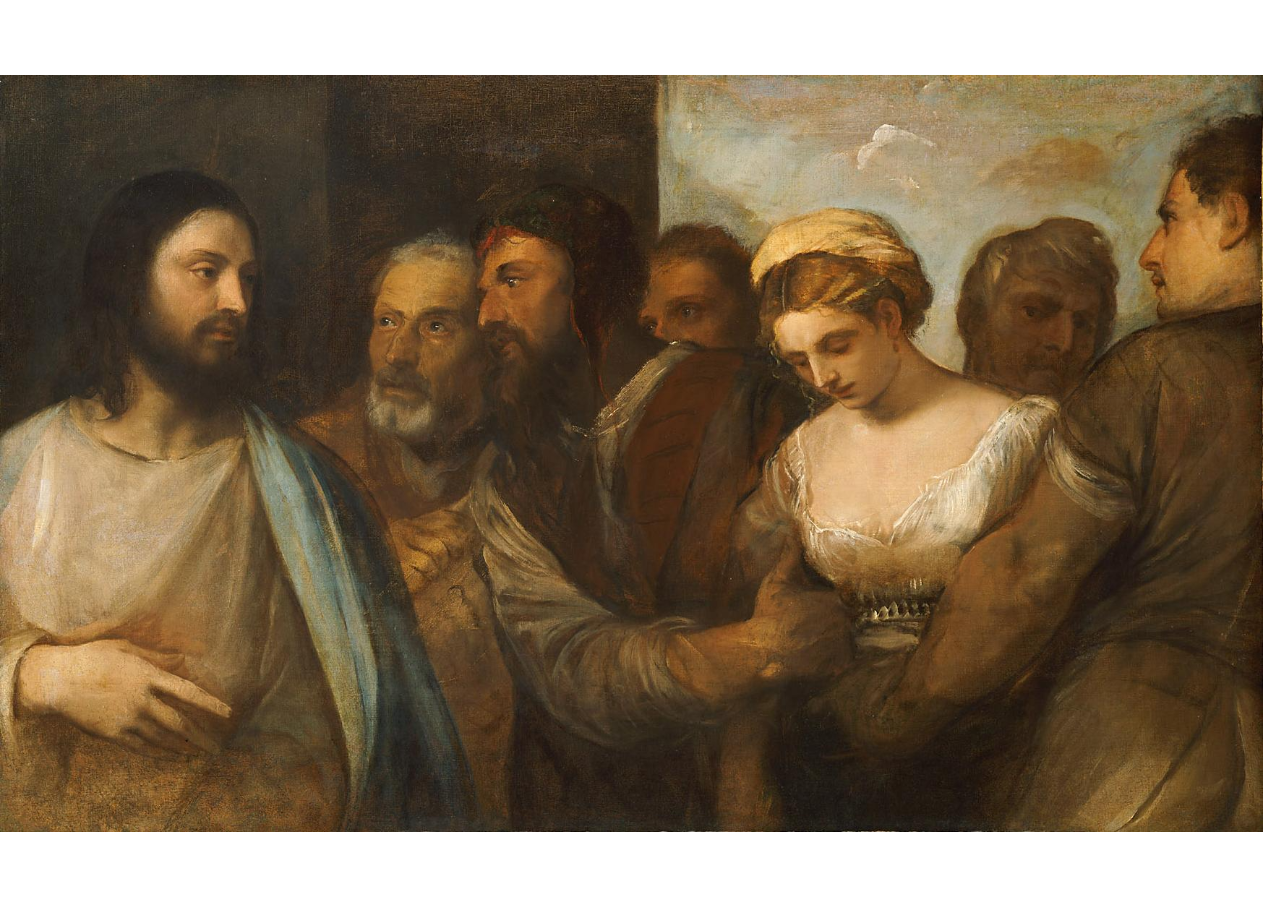
Tiziano Vecelio (Pieve di Cadore c. 1488 - Venice 1576), Christ and the Adulteress, c. 1512/15, oil on canvas, 82.5 x 136.5 cm, Vienna, Kunsthistorisches Museum
Month of October.
Women of the New Testament: The Adulteress.
While Jesus went to the Mount of Olives. But early in the morning he arrived again in the temple area, and all the people started coming to him, and he sat down and taught them. Then the scribes and the Pharisees brought a woman who had been caught in adultery and made her stand in the middle. They said to him, "Teacher, this woman was caught in the very act of committing adultery. Now in the law, Moses commanded us to stone such women. 2 So what do you say?" They said this to test him, so that they could have some charge to bring against him. Jesus bent down and began to write on the ground with his finger. But when they continued asking him, he straightened up and said to them, "Let the one among you who is without sin be the first to throw a stone at her." Again he bent down and wrote on the ground. And in response, they went away one by one, beginning with the elders. So he was left alone with the woman before him. Then Jesus straightened up and said to her, "Woman, where are they? Has no one condemned you?" She replied, "No one, sir." Then Jesus said, "Neither do I condemn you. Go, (and) from now on do not sin any more." (John 8, 1-11)
Art for meditation - September 2023
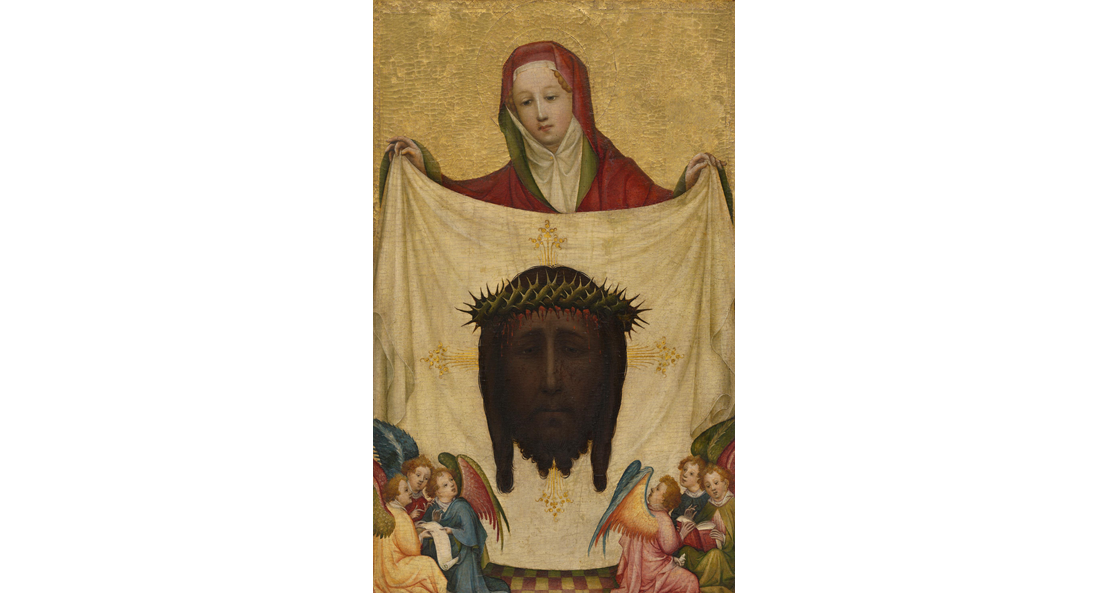
Master of Saint Veronica (active between 1400 and 1425), St. Veronica with the Holy Kerchief, c. 1425, oil on panel (fir wood), 78.1 x 48.2 cm, Munich, Alte Pinakothek
Women of the New Testament: Veronica.
Accompanying him were the Twelve and some women who had been cured of evil spirits and infirmities, Mary, called Magdalene, from whom seven demons had gone out, Joanna, the wife of Herod's steward Chuza, Susanna, and many others who provided for them out of their resources. (Lk 8:2-3)
The women who had come from Galilee with him followed behind, and when they had seen the tomb and the way in which his body was laid in it, they returned and prepared spices and perfumed oils. Then they rested on the sabbath according to the commandment. (Lk 23:55-56)
Art for meditation - August 2023
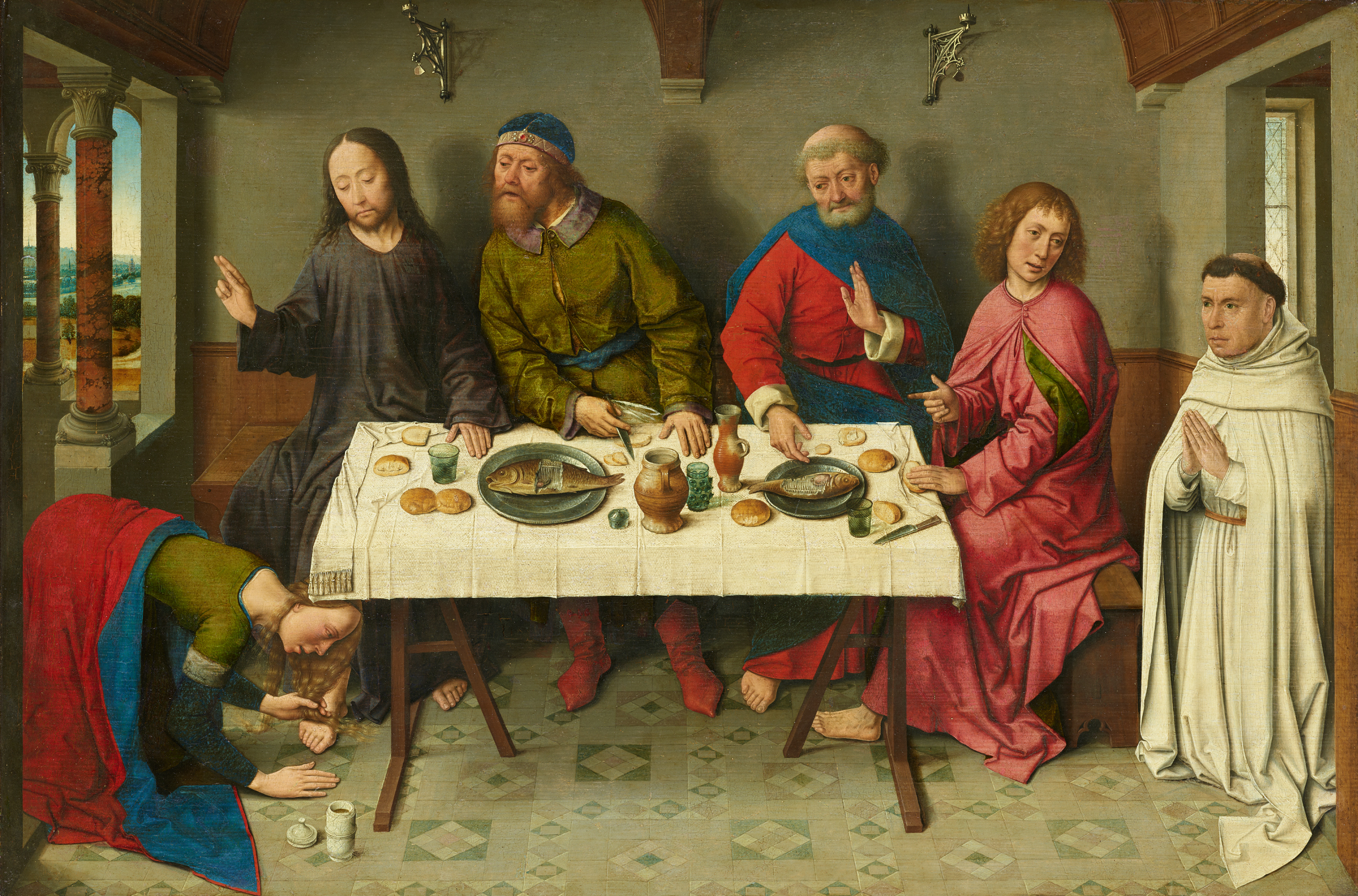
Dierick Bouts (Haarlem c.1410– Louvain 1475), Christ in the House of Simon the Pharisee, between 1450 and 1475, oil on wood, cm 42.2 x 62.5 cm, Berlin, Gemäldegalerie
Month of August.
New Testament women: the Sinner in the House of Simon.
A Pharisee invited him to dine with him, and he entered the Pharisee's house and reclined at table. Now there was a sinful woman in the city who learned that he was at table in the house of the Pharisee. Bringing an alabaster flask of ointment, she stood behind him at his feet weeping and began to bathe his feet with her tears. Then she wiped them with her hair, kissed them, and anointed them with the ointment.
Art for Mediatation - July 2023
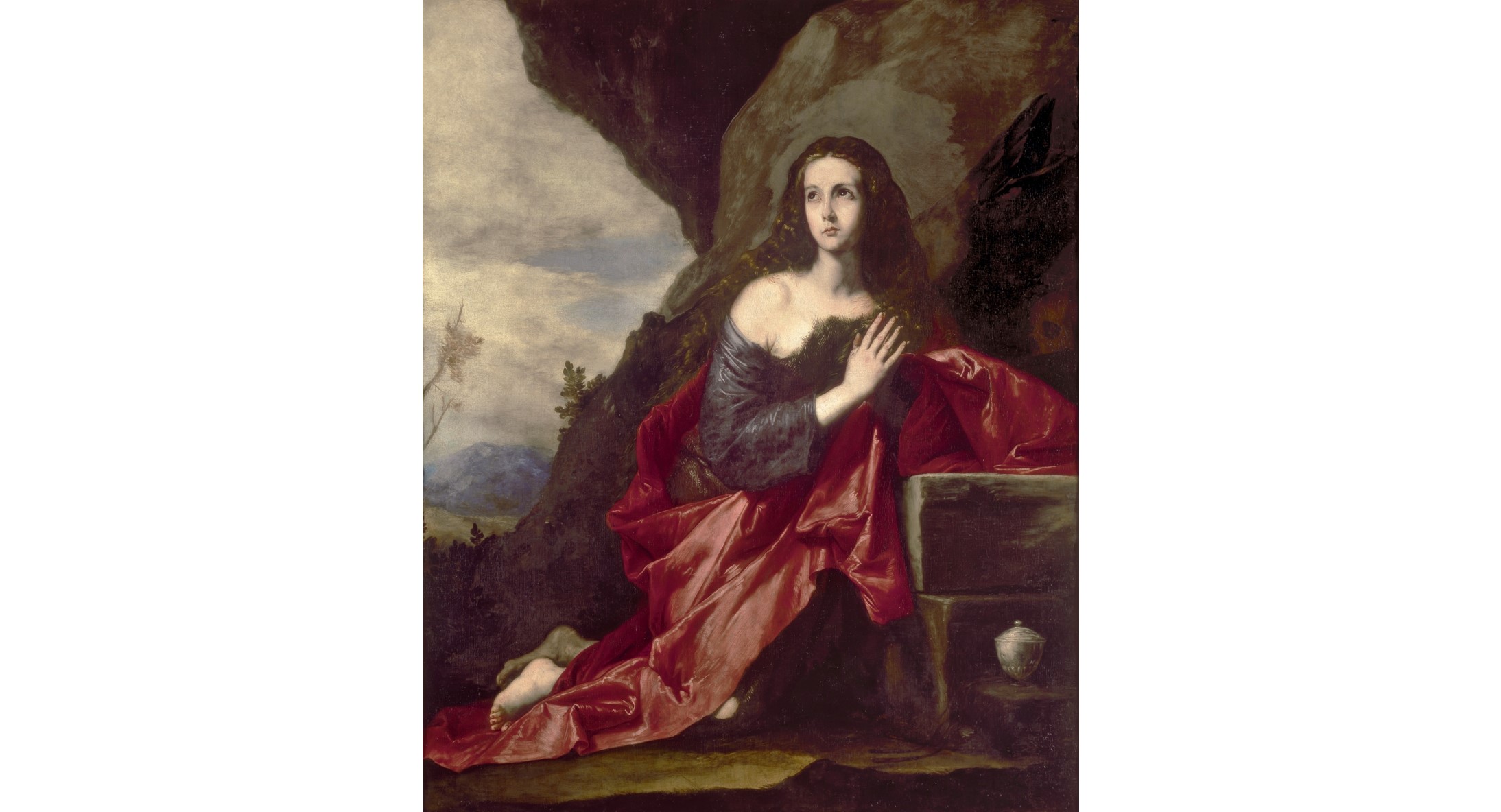 José de Ribera (Játiva, Valencia 1591 – Napoli 1652), Penitent Magdalene, 1641, oil on canvas, cm 182 x 149, Madrid, Prado Museum.
José de Ribera (Játiva, Valencia 1591 – Napoli 1652), Penitent Magdalene, 1641, oil on canvas, cm 182 x 149, Madrid, Prado Museum.
Month of July.
New Testament women: Mary Magdalene.
Afterward, he journeyed from one town and village to another, preaching and proclaiming the good news of the kingdom of God. Accompanying him were the Twelve and some women who had been cured of evil spirits and infirmities, Mary, called Magdalene, from whom seven demons had gone out, Joanna, the wife of Herod's steward Chuza, Susanna, and many others who provided for them out of their resources. (Lk 8, 1-3)
Art for Mediatation - June 2023
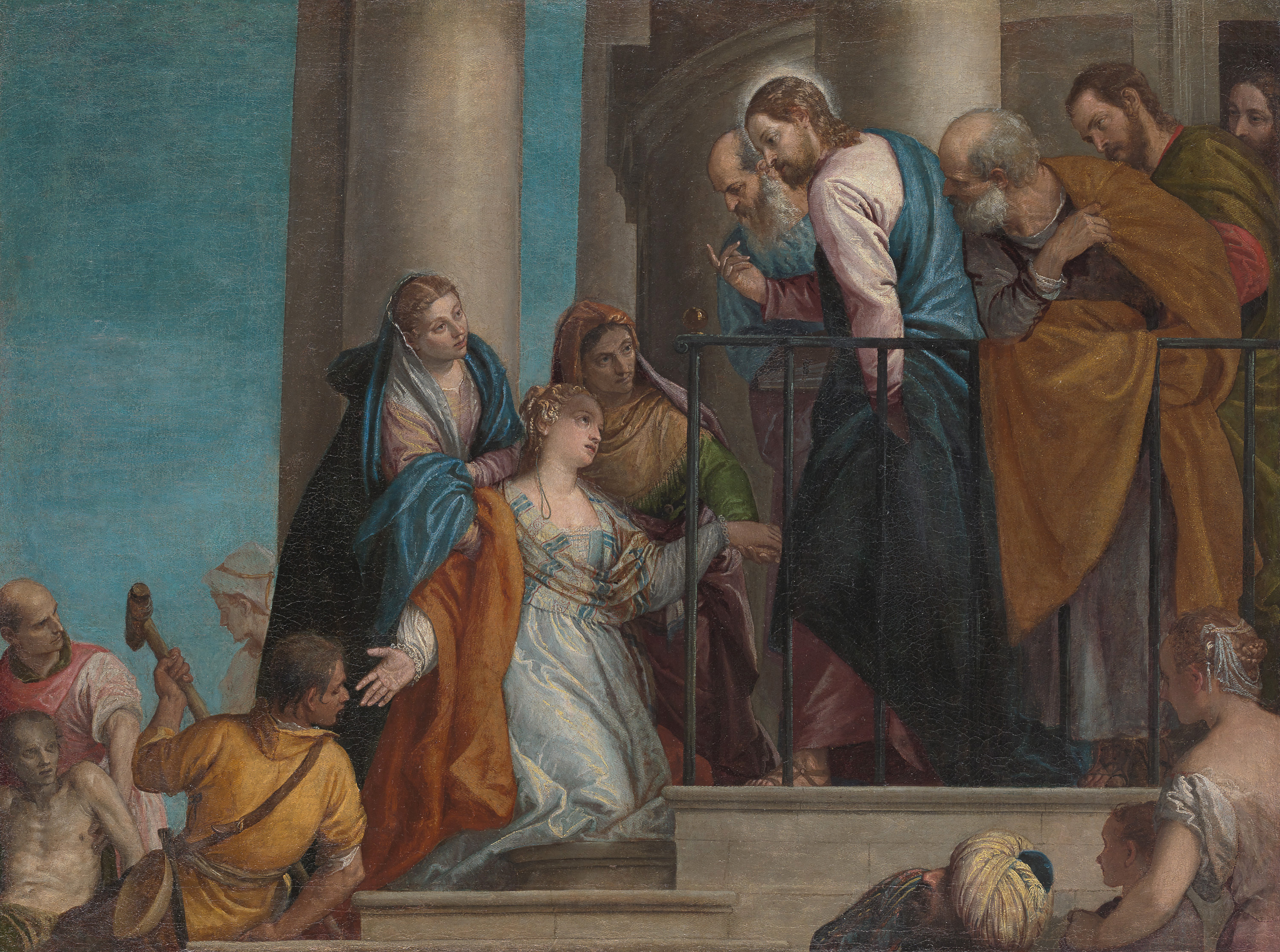 Veronese - Paolo Caliari (Verona 1528 - Venice 1588), La risurrezione del giovane di Nain, 1565-70, oil on canvas, cm 102 x 136, Vienna, Kunsthistorisches Museum.
Veronese - Paolo Caliari (Verona 1528 - Venice 1588), La risurrezione del giovane di Nain, 1565-70, oil on canvas, cm 102 x 136, Vienna, Kunsthistorisches Museum.
Month of June.
New Testament women: Nain’s widow.
Soon afterward he journeyed to a city called Nain, and his disciples and a large crowd accompanied him. As he drew near to the gate of the city, a man who had died was being carried out, the only son of his mother, and she was a widow. A large crowd from the city was with her. When the Lord saw her, he was moved with pity for her and said to her, “Do not weep.” He stepped forward and touched the coffin; at this the bearers halted, and he said, “Young man, I tell you, arise!” The dead man sat up and began to speak, and Jesus gave him to his mother. Fear seized them all, and they glorified God, exclaiming, “A great prophet has arisen in our midst,” and “God has visited his people.” This report about him spread through the whole of Judea and in all the surrounding region.(Lc 7, 11-17)